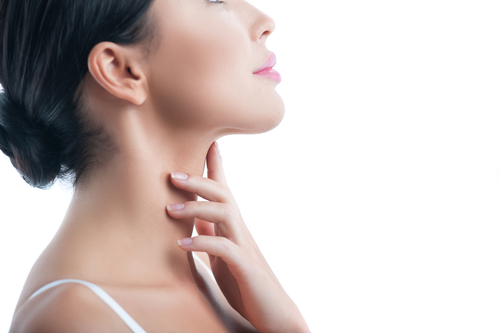
Acne is by far the no.1 skin disease in the world. It knows no age, gender, or race. Most of us have it at one time or another. It is so common that millions and millions of people experienced it at least once in their lifetime. Even teens with clear skin sometimes develop acne as adults. But then, knowing all this probably won’t make any difference to your teenagers. This won’t make it easier for them to look at themselves in the mirror and see big red spots all over their face or much less, feel good about it. For them, a breakout is plain and simple, a breakout. End of the world, doomsday, and next thing you know, they are slowly retreating into their own little shells like hermit crabs trying to hide. In their great desire to cure themselves of acne, they sometimes resort to self-medication. They also readily believe as bible truths whatever information their friends pass on to them about acne, which oftentimes makes matters worse. As moms, we have to make our teenagers understand that in the fight against acne, knowledge is the key weapon. As a helpful tip, here are some of the popular myths about acne that have been circulating around, and some truths that easily debunk them. It is best to share these with our teenage sons and daughters so they can better understand this skin condition.
MYTH #1: ACNE IS CURABLE Sad to say, IT IS NOT, but, with the right kind of medicine, it is CONTROLLABLE. Provided you find the right medicine and skin care treatment for you, you can still enjoy clear and healthy looking skin even if you have acne. But then, it would be good to note also that when your skin becomes clear of acne, that does not mean that it has been cured, it only shows that the medicine and daily maintenance routine is working on you.
MYTH #2: ACNE IS CAUSED BY EATING CHOCOLATES, OILY FOOD AND PUBERTY Contrary to popular belief, acne is NOT CAUSED by eating too much CHOCOLATES and oily food nor does it occur exclusively during puberty. Acne is a cyclic process that everyone experiences at any age. There are many factors that trigger acne formation. Stress is number one since it releases the hormone, cortisol, which can make your acne worse. Hormonal imbalance, climate changes, cosmetic products (comedogenic), prescription drugs, and industrial chemicals are just some of the things that heighten acne formation. While diet is not the cause of acne for some people, certain food can also trigger the acne process, which oftentimes result to breakouts. Studies show food rich in iodine, hormones found in meat and poultry, and food with high-glycemic index aka “junk food” are often times the main culprits. Keeping a daily diary of everything you eat can help pinpoint your own acne culprit.
MYTH #3: THE SUN IS GOOD FOR DRYING PIMPLES On the contrary, the sun encourages acne formation since, as your tan fades so are the dead skin cells that oftentimes clog pores and cause zits. When your skin gets dried from too much sun exposure also, it compensates by producing more oil that also tends to clog the pores.
MYTH #4: POPPING ZITS WORK “Draining” the skin of puss has terrible and sometimes permanent consequences. While it is gratifying to deflate them pimples, popping zits actually drives the bacteria deeper causing a terrible infection or worse, pimple scars that take time to heal.
Popping pimples can lead to “Vestibulitis”, an inflammation of the skin which can become severe that it would require treatment with antienebiotics. MYTH #4: YOU CAN SHARE ACNE Acne is not contagious at all. Sharing pillowcases or kissing each other cheeks to cheeks won’t make you catch acne.
MYTH #5: A PIMPLE IS SIMPLE This is not the case at all. Acne is rather a complex process that involves oil and dirt accumulation, clogging pores, bacteria multiplication, the works. It includes the immune system fighting multiple raging infections in your face and sometimes, body too.
MYTH #6: FREQUENT WASHING HELPS CONTROL OIL On the contrary, frequent washing can actually strip skin of natural oils which can cause it to overproduce more oil as an auto-response. Rinsing your face twice or thrice a day is enough.
Everyone’s skin is unique. Some suffer more from severe acne and scarring compared to others. To control acne, the number one thing we must do is avoid experimenting with different facial treatment. Sticking to one treatment that has been clinically safe and dermatologically proven is highly recommended. At the end of the day, it would be good to remind our teenagers that acne is an ordinary skin condition. It is self-limiting yes but not life-threatening. It does not happen overnight so it also won’t go away overnight. The key is to be patient and cooperative with you when it comes to treatment.
It’s also recommended to look into solutions that work from within. Lactezin, a product to be taken orally, which has Lactoferrin, Vitamin E and Zinc can help smoothen out skin, address oiliness and pimples and can even improve general skin condition by minimizing pores. With the recommended dosage of two capsules daily, this may not only be the solution to acne problems and management, but may also be a way to prevent having this type of skin problem, and this is no myth!
—-
This skin awareness article is made in collaboration with Lactezin.

Leave a Reply